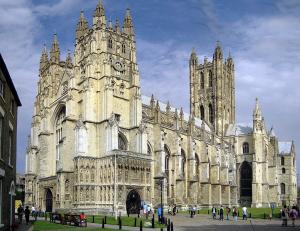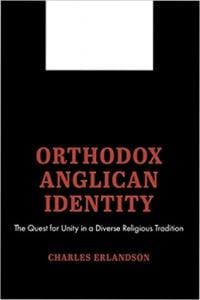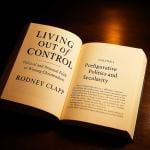 Post-Anglican Anglicanism: Part II
Post-Anglican Anglicanism: Part II
What do I mean by a “Post-Anglican Anglicanism?” The phrase I’ve coined is deliberately ironic (and even oxymoronic!) I’m employing it to suggest that Anglican identity will be an even more complex and difficult thing in the 21st century than it has been in the past.
In previous blogs, I’ve defined Anglicanism in terms of structural, normative, and stylistic definitions or identities. The question is, “What does contemporary Anglicanism look like in terms of each of these definitions?”
Structurally, Anglicanism has become more confusing and blurry, as is the case with most institutions in the postmodern situation. The Anglican Communion served for much of the 20th century as a convenient way of seeing how Anglican churches relate to one another in a common identity and has been for many (as I discussed in an earlier blog) the most definite and common definition of Anglicanism.
But with the ongoing orthodox Anglican realignment and the rise of GAFCON as an alternative to the decaying Anglican Communion, the structural definition of Anglicanism has become much more difficult and complex. The present situation has provoked the question of whether or not communion with Canterbury is necessary or not to Anglican identity.
There’s more to it. The scramble by many orthodox Anglicans to create new wineskins for new wine has led to the development of overlapping jurisdictions, something that has been frowned upon for the most part in church history. To make matters more confusing, Anglicans are choosing which bishop they serve under based not on geography but on “affinity.” While this might seem a necessary move if the bishop in a certain jurisdiction is heretical, what will develop when this democratic notion is used to select bishops based on churchmanship or other issues? The issue of women’s ordination also contributes to the increasing fragmentation of a structural definition of Anglicanism, a development, we should remember, that’s only 35 years old.
It’s ironic as well that the structural definition of Anglicanism as being those churches in communion with Canterbury has risen to prominence at the very time when structural definitions are most problematic.
The present situation forces Anglicans to ask the question of how shall we govern ourselves and relate to one another without the power of the State to coerce us into such decisions. It’s a question Anglicans haven’t had to ask themselves for a very long time.
It might seem at first, then, that normative definitions will fare much better in such confusing times and will provide some much needed stability. However, the two most important distinctively Anglican formularies – the Prayer Book and the Thirty-nine Articles – are increasingly contested authorities.
And identity is intimately related to authority.
Some Anglicans have rejected the Articles. The 1979 Prayer Book relegates them to the “Historical Documents” where they have been ignored for the most part. And Anglo-Catholics for the most part have a sometimes not so secret hostility towards the Articles. While GAFCON and the ACNA may have the Articles as official theological norms, the reality on the ground may be very different.
As for the Prayer Book, in global terms the traditional Prayer Books are falling into disuse. While the 1662 Prayer Book is still the official formulary for the Church of England, virtually all parishes have effectively replaced it with Common Worship, which allows for such a wide variety of disparate usage that it’s hard to see what aspects of worship are still in common. Many other provinces have replaced the traditional Prayer Books, most notably in TEC. And some other orthodox Anglican churches prefer home-grown liturgies or a smorgasbord of usages from any Prayer Book in existence.
I’m guardedly optimistic about the ACNA producing a sound Prayer Book, but perhaps the larger question there is will anyone use it?
Stylistically, the divergent orthodox Anglicans spiritualities that currently exist stretch the boundaries of a coherent Anglican to the breaking point and beyond. In previous posts I’ve explored ways in which the Evangelical, charismatic, Anglo-Catholic, and Global spiritualities have all challenged the earlier Anglican consensus.
This issue of diversity threatening to undo any coherent identity can be illustrated in the following provocative question: “What does an Anglo-Catholic who is against women’s ordination, hates the Thirty-nine Articles and uses the Missal have in common with an Evangelical who favors women’s ordination, adheres to the Articles, and uses a homegrown liturgy?”
It appears likely, then, that a post-Anglicanism will have the following characteristics:
1. Anglican identity will continue to be contested, without the power of the State to resolve disputes and disagreements.
2. Many will be comfortable being a particular brand of Anglican. For example, being Anglican Evangelical over Evangelical Anglican, or being primarily. This is related to the concept of hybridity – Anglicanism will be mixed with other things.
3. Many people will be cafeteria Anglicans, picking and choosing what aspects of Anglicanism they wish to embrace.
5. Boundaries will be blurred. Many will continue to call themselves Anglican, but it will be increasingly difficult to say why.
6. Anglican churches will have to re-negotiate what being Anglican means and what’s most essential to being an Anglican Christian.
All of this should alarm us and bring us to attention.
But it should also, strangely, encourage us because we will be forced to do theology, practical theology, in which the love of God and the mystery of Christ and His Bride are worked out in our common lives. The truth is that Christian identity, including Anglican identity, has always been constructed. When it becomes too easy to say “I’m an Anglican” or “I’m a Christian” without having to define this and live by it, then the Church becomes impotent.
My study of church history, especially Anglican history has taught me that there is no Golden Age of the Church, and yet every age is the Golden Age.
Perhaps Charles Dickens said it best, when he said: “It was the best of times, it was the worst of times, it was the age of wisdom, it was the age of foolishness, it was the epoch of belief, it was the epoch of incredulity, it was the season of Light, it was the season of Darkness, it was the spring of hope, it was the winter of despair, we had everything before us, we had nothing before us, we were all going direct to heaven, we were all going direct the other way – in short, the period was so far like the present period, that some of its noisiest authorities insisted on its being received, for good or for evil, in the superlative degree of comparison only.” (A Tale of Two Cities)









